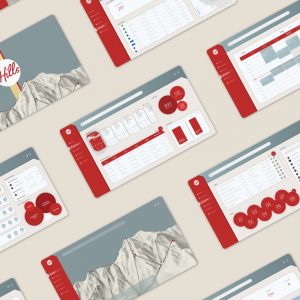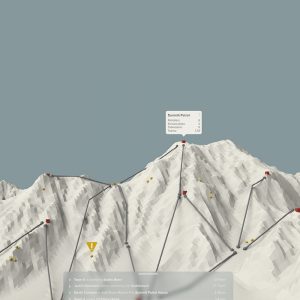Thesis theme allocation: System Design
Topic/Problem Description:
In the U.S. alone, over 600,000 people get injured doing winter sports each year. Most of these accidents occur inside private recreational ski/snowboard areas and are under the jurisdiction of ski patrol. Ski patrol has one of the highest job satisfaction ratings yet depression and suicide in the profession are remarkably high.
Primary research showed that efficiency and accuracy during an on-mountain rescue are the two most important variables regarding the patient’s physical outcome. There are five key factors that directly affect these variables during a rescue:
- Communication – Connecting patrollers and external resources.
- Assessment – Looking at the patient’s condition.
- Response – The time between injury – first response – and extraction.
- Gear – What gear/equipment is needed and where it is.
- Treatment – How well an injury is addressed.
Secondary research showed that patrollers can be debilitated with anxiety and stress during rescues. They are often undertrained and inexperienced while being thrown into extremely technical, and high stake situations. When a patroller is stressed they can’t perform at their best, contributing to a decline in efficiency and accuracy. There are four key stress management techniques that have helped people in other extremely stressful professions take control:
- Positivity – Feeding courage, starving fear
- Visualization – Picturing correct techniques and victorious outcomes
- Segmented Goals – Achieve micro goals and keep advancing
- Breath – Controlling your own physiology
With these points in mind, How might we improve on-mountain rescues by relaxing patrollers and enhancing response efficiency and accuracy?
Solution:
Hills is a two-part system that streamlines mountain logistics and provides the tools to help ski patrollers be successful. Part one is a digital web interface for mountain dispatch that centralizes information regarding weather reports, external resources, patroller information, scheduling, stress management techniques, and more. Hills includes an easy to navigate, three-dimensional visualization of the given resort, allowing dispatch to organize and allocate resources from one screen.
Part two of the Hills system is a redesigned patroller radio. Current radios are clunky, difficult to use in winter apparel, and perform unnecessary functions that aren’t suited for ski patrol needs. The Hills radio is an unobtrusive device designed for the specific needs of ski patrol. An internal GPS updates dispatch on their location and a remote body camera can be accessed by dispatch at any point to allow for treatment feedback or ease a patient’s transition from mountain to clinic.
The Hills system takes logistical burden off the rescuer and allows them to focus entirely on treatment. It minimizes the clutter of a normal rescue and creates a more efficient and accurate procedure.





